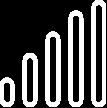












1,700 €/sq m/y.





Belgium’s economic landscape in the second quarter of 2024 is marked by a blend of cautious optimism and underlying challenges. As we progress through this election year, a period often associated with heightened economic uncertainty, the Belgian economy is projected to grow modestly. GDP growth for 2024 has been revised downwards from previous forecasts to 1.31%, with a slight uptick to 1.54% anticipated in 2025. This steady but slow climb comes amidst concerns about the country’s public debt. Despite previous high inflation aiding in the reduction of the government debt ratio in 2022, projections indicate that without significant policy changes, government debt could escalate, reaching 130% of GDP by 2030.
In June 2024, the European Central Bank (ECB) cut interest rates for the first time in nearly a year, prompted by a slowdown in eurozone inflation However, in Belgium, inflation surged again in the first half of 2024, with an estimated rate of 3.23% for the entire year. Inflation is expected to approach the ECB's 2% target by 2025. This recent rise in Belgian inflation complicates the ECB's task, requiring them to closely monitor price trends in the coming months before considering another rate cut Belgium's unemployment rate, which was around 5.5% in 2023, has risen to 5.8% recently and may continue to increase. The ongoing war in Ukraine has disrupted the global economy, impacting Belgium with a 20% rise in energy prices and significant supply chain issues. These challenges have led to layoffs and more bankruptcies as businesses struggle. Stricter financing terms and economic uncertainty further exacerbate the rising unemployment, creating a challenging job market in Belgium.








Consumer confidence also remained low throughout the first half of 2024, with the initial months seeing a significant decline. This was primarily driven by anxieties surrounding the overall economic situation and rising costs of living, particularly energy. Despite some stability in overall inflation figures, food price increases continued to pinch household budgets This combination of factors led to a cautious spending attitude amongst Belgian consumers, further impacting the retail job market.

The Belgian retail market has faced a challenging economic climate in the first half of 2024, marked by bankruptcies and a slowdown in demand. The year started on a high note with a positive performance in Q1; with a caveat of including take-overs of bankrupt businesses
Moving into Q2, the market experienced a significant decline in activity, with the take-up of retail space reaching just over 80,000 sq m. This brings the cumulative total for the first half of the year to 192,000 sq m
The Out-of-Town segment remains the leader, capturing 65% of the market, followed by High Streets at 28% and Shopping Centres at a distant 7%. A closer examination of the figures reveals that the Shopping Centre segment is the most affected, with current take-up levels standing at just 50% of what they were during the same period over the last two years.
The stability of prime rents across all retail market segments in Belgium is a notable trend in the first half of 2024 Following increases observed last year, prime rental levels have held steady in Q2 2024, with no significant changes expected until 2025
In the High Streets segment, prime rents are currently set at 1,700€/sq m/year on Meir in Antwerp and 1,650€/sq m/year on Rue Neuve in Brussels. Similarly, the Shopping Centre segment has maintained its prime rent at 1,400€/sq m/year. By 2025, a modest increase of 25€ is projected for both segments, raising prime rents to 1,725€ and 1,425€/sq m/year, respectively. Meanwhile, the Out-of-Town Retail category has kept prime rents at 180€/sq m/year, with no further increases anticipated in the next few years.
This stability amidst a challenging economic climate, marked by numerous bankruptcies and a slowdown in demand, reflects a cautious but resilient market. The steadiness of rental rates suggests that despite the economic turbulence, key retail locations continue to retain their value and appeal.
Retail sales in Belgium continued a downward trend in the first half of 2024, with Q2 mirroring the concerning figures from Q1 Consumer confidence remained low, leading to cautious spending habits. This cautiousness, coupled with ongoing economic uncertainty, resulted in declining sales volume across most retail sectors. While there are signs of a slight uptick in May's sales figures, a full recovery for the Belgian retail market seems unlikely in the short term.
Take-up by quarter (000s sq m)

In H1 2024, the Belgian retail investment market exhibited a stable outlook, particularly in Q2. Following the ECB's recent 25 basis points rate cut on June 24, the market remains in a state of cautious anticipation. Despite this monetary easing, the spread between the policy rate and prime yields remains narrow, indicating ongoing uncertainty among investors.
Turning our attention to the retail sector, prime yields have maintained stability for twelve consecutive months. In the High Streets segment, the yield stands at 4.85%, representing a noteworthy 170-basis point increase compared to the market peak. Meanwhile, Shopping Centres maintain a theoretical prime yield around 5.20%, reflecting a 120-basis point increase from the sharpest recorded yield. In contrast, Out-of-Town retail segments now offer a 6% yield, marking a 75-basis point increase from the market peak.
Looking ahead, a compression in prime yields is expected during 2025, with a small compression of 25 basis points. This anticipated adjustment is projected to potentially affect only the High Streets and Shopping Centres segments.
In the first half of 2024, the Belgian retail investment market demonstrated moderate activity, with a total investment volume reaching 197 million euros.
Q2 2024 saw a subdued investment climate, with only 47 MEUR invested, indicating a cautious approach from investors amid market uncertainties. Notably, investment in this quarter was evenly split between Out-of-Town retail and High Streets, each accounting for 50% of the total.
The most significant transaction of the quarter was Green Est. Capital’s acquisition of Rozenbergpark, a 6,000 sq m retail park in Mol, for approximately 10 MEUR. This deal highlights the ongoing interest in strategically located retail parks.
Despite the activity in these segments, the Shopping Centres segment remains stagnant, with no transactions recorded yet. However, there are indications of potential deals in the pipeline, which could significantly boost the annual investment volume if they come to fruition. This mixed performance underscores the cautious but persistent interest in diverse retail properties across Belgium.
